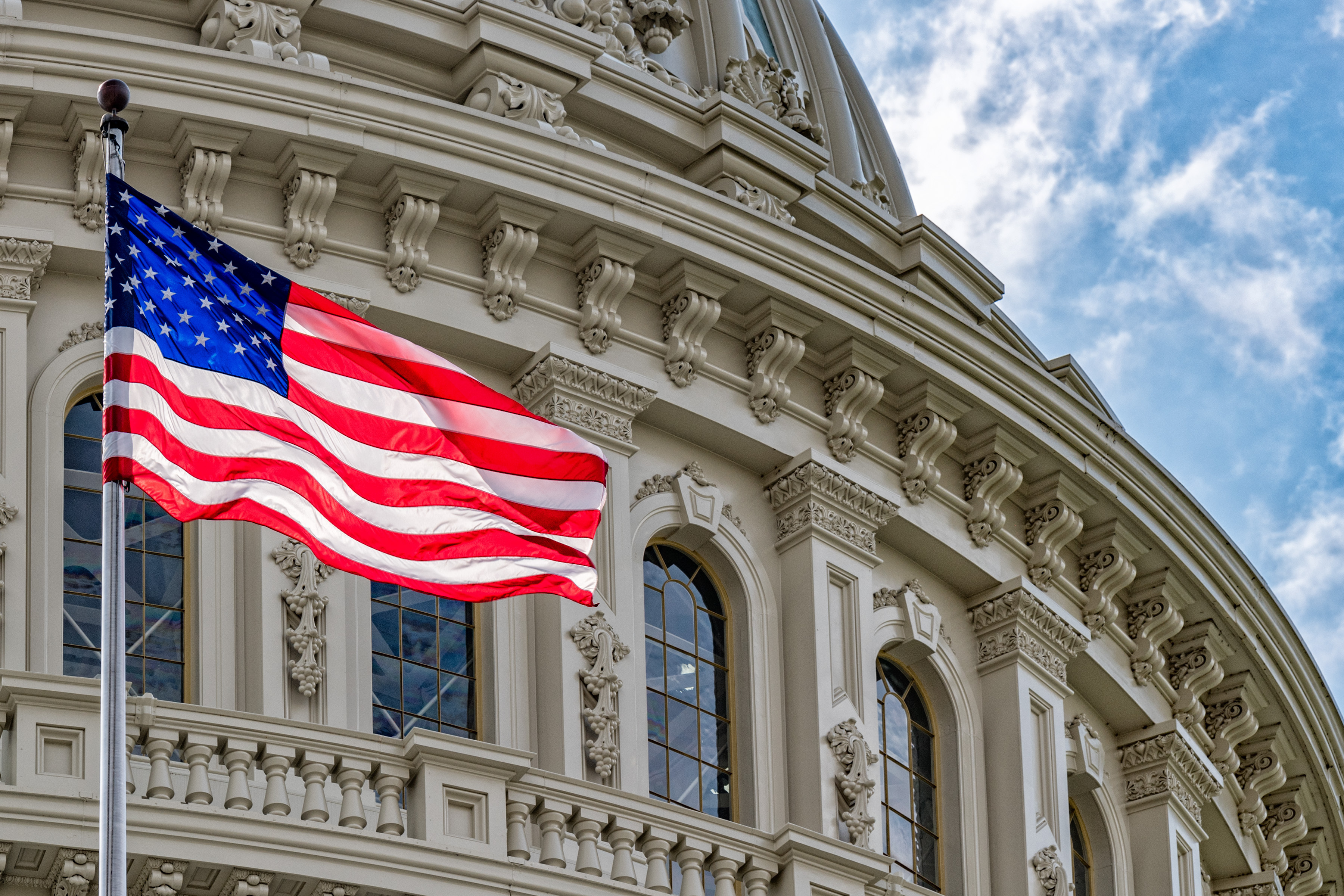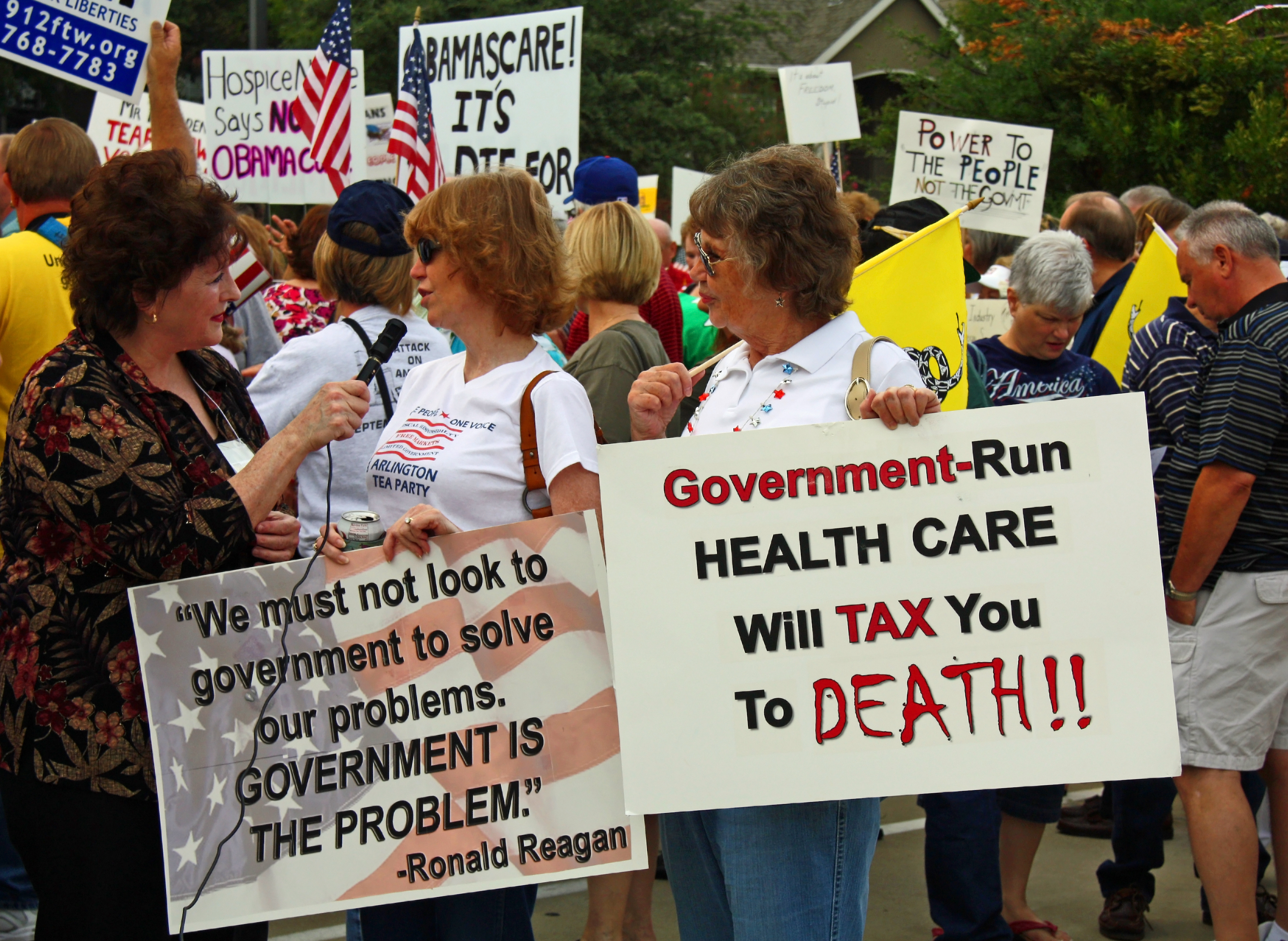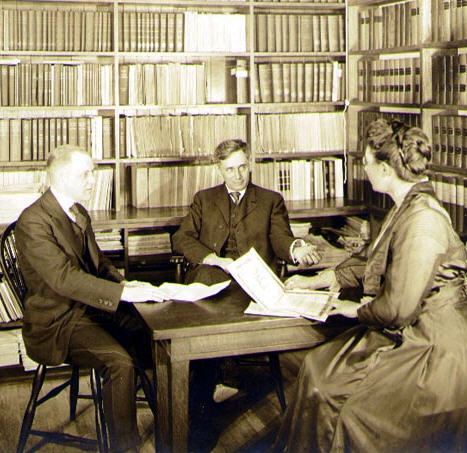This was a deliberate system of what was called checks and balances, to fragment and distribute government power so widely as to make government tyranny impossible. This tradition has lived on ever since, even though America now has a big State and is radically different from the small agricultural nation it was at the end of the 18th century. The central State is extremely strong. But still, this tradition that central government power is the enemy of individual liberty is an extremely strong theme and motif. And it is an element of American politics that most people in the world, including most people in Europe, have difficulty understanding because it is difficult to find this kind of opposition to centralised government power in other modern countries of the world.
American government: the balance of power
Paul Mellon Professor of American History
- Americans’ distrust of central government dates back to the 18th-century Revolutionary War, in which the American colonies rebelled against the centralised State power of King George III.
- While the founders of the United States restricted the powers of the central government, the powers given to individual states were vast and immense. State governments could and did violate all kinds of individual rights.
- Individual states lack the resources to control private corporations that dwarf them in size and power. Only a large central State can rein in national and multinational corporations.
The badness of King George
American government forms another paradox equally puzzling to the paradox of civic versus racial nationalism.
America has a tradition of opposition to centralised state power. The myth of its origins dates back to the rebellion against the King of England, George III, who was thought to have aggrandised too much power onto himself and Parliament. The justification for the Americans who were revolting in a war of independence against Britain was not just to free themselves from Britain, but also to free themselves from a form of rule they saw as destructive to liberty. They imagined themselves as consecrating themselves and their society to individual liberty. And because of the circumstances of their rebellion and the bitterness with which they regarded George III and the power that Parliament wielded over them, they came to see government as the central source of tyranny for individuals.
Checks and balances
As a result, Americans set up a government that deliberately fragmented the power of the central state, that ensured that Washington would be small, that Congress would be weak and that power in the central state would be fragmented into different parts. Congress would be pitted against the president who would be pitted against the Supreme Court, each having rights and responsibilities and none able to ignore the others.

Washington, DC Capitol dome detail with American flag. Photo by Andrea Izzotti.
Little tyrannies
There's another tradition of government in America, and that has to do with the states. As limited as government powers were to the central State, the powers given to individual states were vast and immense. The fear of tyrannical State power was not a fear that New York, Texas or California would oppress me. It was a fear that Washington would oppress me. And so state governments consistently violated all kinds of individual rights. Slave law was state law. There were laws against whether you could do commerce on Sunday, whether you could drink, whether you could purchase items of reproduction, whether you could go to the theatre, whether you could live a sexual life as you wished. The different states were precisely those little tyrannies America said it was founding itself to protect against.
So you have this built-in contradiction. It's not just that power is divided between the central State and the individual states. It’s that the two levels of states in America operate by different political principles. One believes in limiting power and the other believes in expanding power. This leads to a lot of confusion and contradiction in American life because the principles underlying the central State and the individual states are so different from each other and so contradictory.
From sleepy southern town to power base
A belief that central government power is bad is one of the core principles of the Republican Party. One hears it in American politics every day of the year: a constant railing about powers accumulating to the central State that ought to belong to individual states or to individuals themselves.
America faces another contradiction. For a long time, it managed to keep its central State small. Until around 1939 or 1941, Washington, D.C. was a sleepy southern town. But the Great Depression of the 30s and early 40s, World War II and then 40-plus years of Cold War required America to have a big State, a big permanent military and a big social welfare state so it could take care of its people and their needs in the competition for supremacy with the Soviet Union. Since the 1940s, the American State has become immense. And Republicans, while acceding to size in terms of the military, have fought the legitimacy of this State at every turn in the road.
Why anti-government rhetoric matters
Even though it seems foolish to be fighting a big State, anti-government rhetoric remains an intrinsic part of politics in America. It has made the job of governing in America extremely difficult. Think about the battles over the Affordable Care Act, aka Obamacare, which provides health insurance to every American who needs it. By European standards, it's a modest law and a modest system, but it has aroused so much anger that it has repeatedly paralysed politics.

A conservative Tea Party Express protest against big government and Obamacare in Dallas, 4 September, 2009 in Dallas, TX. Photo by Ken Durden.
Any big advance in terms of central government power in America is followed by a backlash on the part of Republicans who insist that this is the tyranny of George III of the late 18th century all over again. You can say, well, there is a big State despite the rhetoric, so the rhetoric doesn't matter that much. But, in fact, the rhetoric matters a great deal because governing is always confronted with this fear of the big State. This has made governing in the 21st century, where you want the State to be creative and innovative, extremely difficult – particularly since one of the parties is so opposed to that State even existing.
Why America needs a strong central government
The central government became large and permanent during the Great Depression, when more than 20% of Americans were out of work, when the capitalist economy was not functioning and when there was a great deal of despair. Essential to America's recovery was building a strong State to manage capitalism better than the capitalists can manage it themselves.
It was also at this time that the federal government built a welfare state for the casualties of the economic system. The American welfare state, which is smaller than the European welfare state but still significant, was born at this time. And it was born out of a sense of desperation and a realisation that the individual states did not have the resources, the capability or the resolve to deal with a crisis of this dimension.
Part of the problem of states handling economic matters is that private corporations are not limited to states. They are national and often international entities. So the idea that individual state governments can control private corporations that dwarf them in size, power and resources is impossible to sustain. So to the federal government, to the Federal Reserve, to the economists who work in Washington, to those who provide a social safety net and for those who need help to pay for scientific innovation, including the innovation that produced the IT revolution of the late 20th century, the support and resources of the central government proved absolutely critical. The America of today was built far more by the central State than by the individual states themselves.
Why America needs strong states
The architects of America were not wrong to say that sometimes central governments can accumulate too much power to themselves and get too distant from the people. It's not wrong to have other tiers of government that are closer to the people and more accessible to them. States work on a smaller scale, serving many of the immediate needs of individual citizens and arguably doing that better than the federal government can.

Louis Brandeis (centre), Alice H. Grady, and Mass. State Actuary Irvin Hirst in the Brandeis law offices, 161 Devonshire St., Boston. (January, 1916). Wikimedia commons. Public Domain.
States make one other important contribution as well. This was identified by Louis Brandeis, a former Supreme Court justice and one of America’s greatest jurists. He thought of individual states as laboratories of democracy, where you could try out new ideas and new schemes – a new social welfare policy, a new industrial policy or even a new way to manage a pandemic like COVID-19. If your policy works, other states can copy it. If it fails, it’s easier to throw out than if the federal government had made a big commitment to it.
So, on a smaller scale, with their encouragement of innovation and ability to bring government closer to the people, states work well. What is most important, however, is that the theories of government underlying the states and the federal government be brought into alignment. The two levels of government have to be on the same page and operating with the same sense of opportunity and restraint with regard to individual liberties and the needs of the American citizens.
Discover more about
the federal government vs. the states
Gerstle, G. (2016). Liberty and Coercion: The Paradox of American Government from the Founding to the Present. Princeton University Press.
Fraser, S., & Gerstle, G. (Eds.). (2005). Ruling America: A History of Wealth and Power in a Democracy. Harvard University Press.
Gerstle, G. (2010). A State Both Strong and Weak. The American Historical Review, 115(3), 779–785.